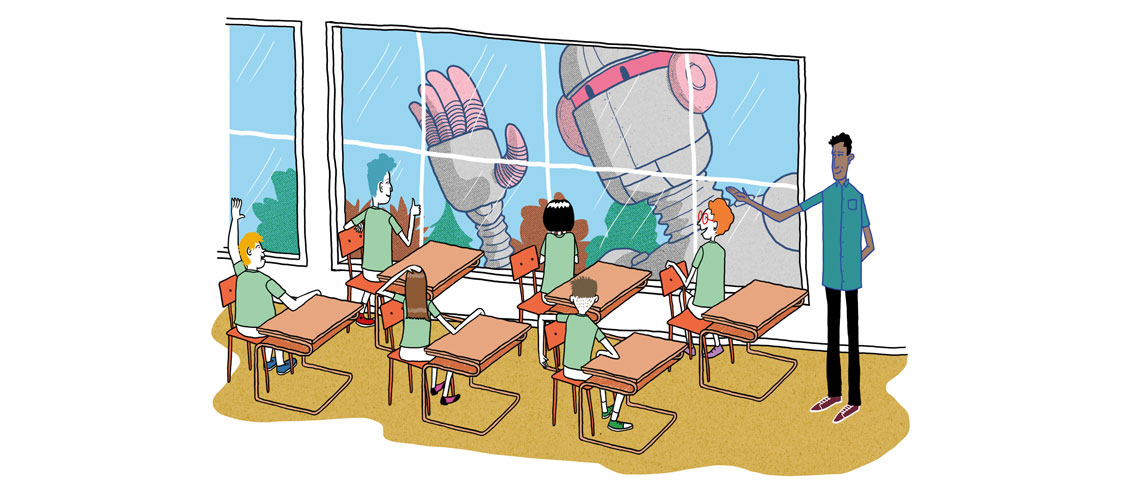The idea of conducting scientific research is usually associated with undergraduate and graduate studies. Scientific foundation programs that give middle-school and high-school students the opportunity to experience academic research before university are little known in Brazil, and according to a group of American researchers, there are many benefits associated with the practice.
An article published in PLOS Computational Biology in April discusses how universities and research centers can offer a meaningful scientific experience to high-school students and how this can positively impact both the future careers of young people and the image of the investing institution.
One of the benefits is that high-school students are given the opportunity to witness firsthand the practical application of concepts learned at school. The experience can also show students that much of the work done in a laboratory is grounded in what they study and discuss in the classroom.
The authors acknowledge that integrating high-school students into a laboratory setting can be challenging, but that the effort ultimately helps to promote a scientific culture. “It certainly takes time to explain concepts, teach techniques, and supervise their experiments and analyses. However, when these students are engaged successfully, they tend to do very well,” say Subhamoy Das, a neurosurgeon at Stanford University, USA, and his colleagues in the article.
They also note that scientific foundation courses help to deconstruct the stereotypical image the public has of a scientist as an inaccessible professional locked in a laboratory, as well as empowering young people to pursue research opportunities as undergraduates.
This type of approach is common in the USA, where many higher education institutions offer such programs, and schools encourage their students to take part as a way of gaining valuable experience that can help them stand out when applying to universities.
In Brazil, the method is not widely used; only a few higher education and research institutions offer these types of programs to high-school students. One that does is the University of São Paulo (USP), which in 2016 established its Science and Technological Development and Innovation Foundation Program, designed to foster a scientific and technological culture among students aged 15 and older under the guidance of professors from the human, exact, and biological sciences.
The Scientific Foundation Scholarships Program for High-School Students (PIBIC-EM), meanwhile, has been running at the University of Campinas (UNICAMP) for at least 17 years. The Science & Arts Holiday Program, held every year by UNICAMP in January, February, and July, also offers high-school students a glimpse of academic life.
Since 2016, mathematician Cynthia de Oliveira Lage Ferreira, from USP’s Institute of Mathematical and Computational Sciences (ICMC) in São Carlos, has mentored high-school students at Álvaro Guião state high-school. “Those selected receive a grant from the Brazilian National Council for Scientific and Technological Development [CNPq] of R$100 per month for a whole year,” she says. “They attend classes and take part in seminars on mathematics and programming, as well as doing practical exercises in computer labs.” At the end of the year, they write a report on what they have learned and the activities they have participated in during the course.
According to Ferreira, the aim of the initiative is to give students an idea of the courses and careers available to them. “We want to bring these young people and their communities closer to the university and researchers, to create a scientific culture in society,” she says. The program run by ICMC-USP always respects high-school schedules and routines, making it easier for the students to participate, she explains.
Another researcher investing his time in this type of initiative is neuroscientist Norberto Garcia Cairasco of the USP School of Medicine in Ribeirão Preto. He has already mentored four scientific foundation students who participated in lab work and conducted research that they later presented at their schools. Cairasco believest that scientific foundation programs “show young people that public universities are open to everyone and that anyone can attend them, which ultimately benefits the knowledge produced there.”
Physician Iscia Lopes-Cendes, from UNICAMP’s School of Medical Sciences, believes high-school research initiatives can teach students to assume more responsibility and contributes to their academic maturity. She began mentoring young students after finishing her PhD at McGill University in Canada, where it is a common and well-organized practice. “There were even cases where high-school students participated in conferences on genetics and neuroscience,” she says.
Back in Brazil, she began to invite students aged 15 and older to her molecular genetics laboratory. “They come to me because they are interested in participating in real research,” she says. Lopes-Cendes explains that she interviews each candidate, telling them about the lab’s work, asking them about their areas of interest, and finding out whether they have ever conducted experiments at school.
Successful applicants then join one of the lab’s research groups and are assigned tasks and deadlines. “The activities are evaluated at weekly meetings,” she says. She also talks to the students beforehand about which days and times they can be at the lab so as not to compromise their school routines. Several have gone on to present their work at scientific conferences. When the results of their research contribute to a published paper, they are named as coauthors.
Scientific article
Lescak, E. A. et al. Ten simple rules for providing a meaningful research experience to high school students. PLOS Computational Biology. Vol. 15, no. 4, pp. 1–7. Apr. 2019.
